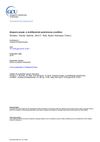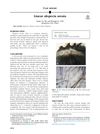Advanced Understanding and New Treatments for Alopecia Areata
November 2016
in “
Saengmyeong gwahag hoeji/Saengmyeong gwahak hoeji
”
TLDR New treatments for the autoimmune hair loss condition alopecia areata may include JAK inhibitors and other immunomodulators.
Alopecia areata (AA) was identified as an autoimmune disease targeting hair follicles, leading to hair loss. The disease's pathogenesis involved the breakdown of immune privilege in hair follicles, triggering an autoimmune response mediated by CD8+ T cells. Psychological stress was also found to influence the immune and hormonal systems of hair follicles, contributing to AA. Key factors in AA pathogenesis included immune privilege guardians (ACTH, α-MSH, TGF-β), NKG2D+ cells (NK and CD8+ T cells), and stress hormones (CRH, substance P). Effective treatments were still needed, with future therapies potentially focusing on modifying hair follicle immune privilege and stress. Recent studies indicated that JAK inhibitors, immunomodulators, Tregs, platelet-rich plasma therapy, statins, and prostaglandin analogues, used in other autoimmune diseases, showed promise for treating AA.

